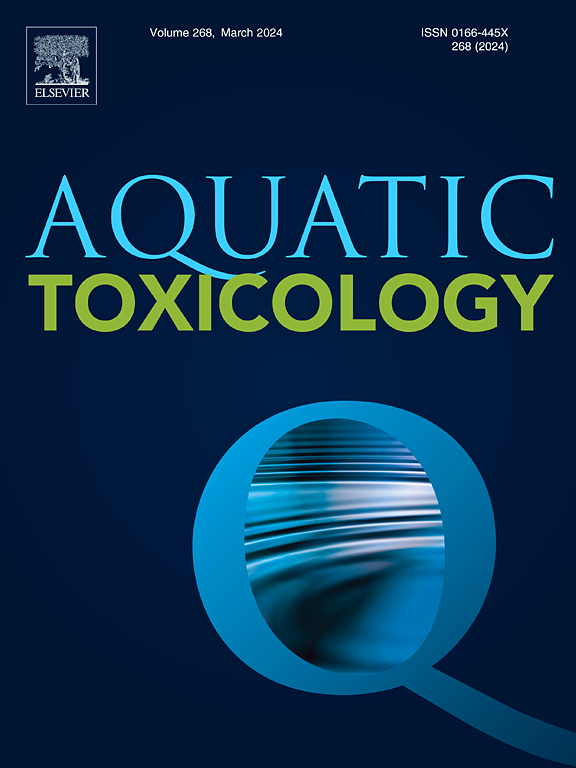An effective method for distinguishing extracellular and intracellular nanoparticles through chemical extractions
IF 4.1
2区 环境科学与生态学
Q1 MARINE & FRESHWATER BIOLOGY
引用次数: 0
Abstract
Nanoparticles (NPs) can adsorb onto cell surfaces (i.e., extracellular NPs) and be internalized by cells (i.e., intracellular NPs), leading to their accumulation and potential toxicity. Therefore, distinguishing adsorbed and internalized NPs is crucial in studying their accumulation and toxicity. In this study, various washing agents (EDTA, sodium citrate, cysteine, and H+) were compared to differentiate internalized NPs from total accumulation in the protozoan Tetrahymena thermophila, by evaluating efficacies of extracting adsorbed NPs from cell surfaces. Key factors influencing the extraction procedures, including the type and concentration of washing agent, contact time, washing cycles, and effects of agents on the organism, were systematically optimized. Consequently, we identified an effective washing agent (i.e., a mixture of 3 mM EDTA, 10 mM sodium citrate, and 10 mM cysteine in Dryl's medium at pH 7) that efficiently extracted adsorbed metal NPs (Fe2O3-NPs, TiO2-NPs, SiO2-NPs, Ag-NPs, and Au-NPs modified by -COOH and -NH2) without causing growth inhibition or cell lysis. Further, a washing procedure was proposed, involving the extraction of samples with the mixture twice for 5 min each. Our study represents the first systematic optimization of a washing protocol for extracting adsorbed NPs across diverse NP types. The developed methodology demonstrates broad applicability, minimal impact on cellular function, and enhanced extraction efficiency compared to existing methods. It will facilitate further investigation into the underlying mechanisms of NP bioaccumulation (including uptake and efflux) and associated toxicity in protozoa, providing critical insights for environmental safety assessments and advancing nanotoxicology research.

求助全文
约1分钟内获得全文
求助全文
来源期刊

Aquatic Toxicology
环境科学-毒理学
CiteScore
7.10
自引率
4.40%
发文量
250
审稿时长
56 days
期刊介绍:
Aquatic Toxicology publishes significant contributions that increase the understanding of the impact of harmful substances (including natural and synthetic chemicals) on aquatic organisms and ecosystems.
Aquatic Toxicology considers both laboratory and field studies with a focus on marine/ freshwater environments. We strive to attract high quality original scientific papers, critical reviews and expert opinion papers in the following areas: Effects of harmful substances on molecular, cellular, sub-organismal, organismal, population, community, and ecosystem level; Toxic Mechanisms; Genetic disturbances, transgenerational effects, behavioral and adaptive responses; Impacts of harmful substances on structure, function of and services provided by aquatic ecosystems; Mixture toxicity assessment; Statistical approaches to predict exposure to and hazards of contaminants
The journal also considers manuscripts in other areas, such as the development of innovative concepts, approaches, and methodologies, which promote the wider application of toxicological datasets to the protection of aquatic environments and inform ecological risk assessments and decision making by relevant authorities.
 求助内容:
求助内容: 应助结果提醒方式:
应助结果提醒方式:


